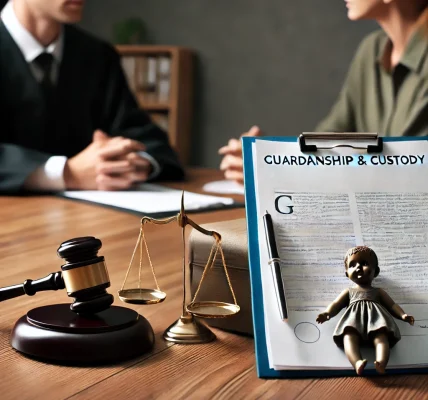Introduction
Child custody laws play a crucial role in determining parental responsibilities after a divorce or separation. Understanding these laws is essential for parents navigating custody disputes to ensure the best interests of the child are upheld. In this blog, we will explore different types of child custody, factors courts consider, and how parents can navigate legal proceedings while prioritizing their child’s welfare.
Types of Child Custody
Child custody can be classified into different categories based on legal and physical aspects:
1. Legal Custody
Legal custody grants a parent the right to make major decisions regarding the child’s upbringing, including education, healthcare, and religious practices. This can be:
- Sole Legal Custody – One parent has the exclusive right to make decisions.
- Joint Legal Custody – Both parents share decision-making responsibilities.
2. Physical Custody
Physical custody determines where the child will reside. Types of physical custody include:
- Sole Physical Custody – The child lives primarily with one parent, while the other may have visitation rights.
- Joint Physical Custody – The child splits time between both parents, ensuring active involvement from both sides.
Factors Courts Consider in Custody Cases
Courts always prioritize the child’s best interests when making custody decisions. Some key factors include:
1. Parental Fitness
Courts assess each parent’s ability to provide a safe, stable, and nurturing environment for the child. This includes evaluating mental and physical health, employment status, and history of substance abuse or domestic violence.
2. Child’s Age and Preferences
In some jurisdictions, a child’s preferences are considered, particularly if they are of a mature age. However, courts ensure the decision aligns with the child’s best interests.
3. Stability and Continuity
A stable environment is crucial for a child’s well-being. Courts prefer to maintain continuity in schooling, social connections, and home life to minimize disruption.
4. Relationship with Each Parent
The court examines the bond between the child and each parent. A parent who has historically been the primary caregiver may have an advantage in custody cases.
5. Parental Cooperation
Parents who demonstrate the ability to cooperate and communicate effectively for the child’s benefit are more likely to be granted joint custody.
Custody Arrangements and Parenting Plans
When determining custody, courts encourage parents to create a Parenting Plan outlining how they will share responsibilities. A well-structured parenting plan typically includes:
- Visitation Schedules – Determining weekdays, weekends, and holiday arrangements.
- Education and Extracurricular Activities – How schooling and activities will be managed.
- Healthcare Decisions – Agreement on medical care and insurance responsibilities.
The Role of Mediation in Custody Disputes
Mediation is a process where a neutral third party helps parents reach a mutually agreeable custody arrangement. This approach is often preferred as it reduces conflict, saves time, and ensures the child’s needs are prioritized.
How to Modify a Custody Agreement
Custody agreements can be modified under certain circumstances, such as:
- A significant change in a parent’s circumstances (e.g., relocation, job change).
- A child’s changing needs as they grow older.
- Evidence of neglect, abuse, or an unsafe environment.
- Parental agreement to revise the custody terms.
Parental Rights and Responsibilities
Both parents have fundamental rights and responsibilities in custody arrangements:
- Right to Visitation – Even if one parent has sole custody, the non-custodial parent is usually entitled to visitation.
- Child Support Obligations – The non-custodial parent may be required to provide financial support for the child’s upbringing.
- Parental Relocation – If a custodial parent wishes to relocate, they may need court approval, ensuring the move does not disrupt the child’s well-being.
Avoiding Common Mistakes in Custody Cases
Parents can avoid legal pitfalls by:
- Focusing on the Child’s Needs – Prioritizing the child’s well-being over personal conflicts.
- Maintaining a Positive Relationship with the Other Parent – Encouraging healthy co-parenting.
- Following Court Orders – Ensuring all legal agreements and visitation schedules are followed.
- Documenting Interactions – Keeping records of communication and involvement in the child’s life to support claims in court if necessary.
Conclusion
Child custody laws are designed to ensure that children receive care, love, and stability even after their parents separate. Understanding these laws can help parents navigate custody proceedings while making informed decisions that serve the child’s best interests. Seeking legal counsel and considering mediation can make the process smoother and more cooperative. Ultimately, a child-centered approach benefits both parents and children in the long run.




